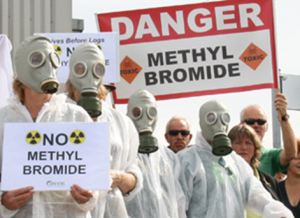Methyl Bromide or other fumigants? – The case of cashew
Methyl Bromide or other alternatives for fumigating agricultural products? – The case of cashew

Methyl Bromide (MBR) and other substances responsible for ozone depletion were during the Montreal Protocol phased out. In August 1987, this international treaty, signed by 179 countries was birthed to protect the ozone layer, however it was enforced in August 1989 and has since been undergoing revision partly to control the creation of new chemicals and enable financial means for other countries to comply.
This odorless and colorless gas has been extensively used as fumigant for stored products in ships, and warehouses, however recognized as an ozone depleting gas. Up until 2005, Methyl Bromide was still used in cashew warehouses and ships for exports, although cashew producing countries signed the treaty to phase it out.
The Government of India has otherwise decided that import of all agricultural products to the country should be Methyl Bromide fumigated with effect from 1st April, 2017, otherwise rejected for non-compliance with import regulations. This decision was rationalize among many other by the fact that the Montreal Protocol did not ban the use of MBR for fumigation of harvested/stored crop but for its use in the field on the soil.
Other countries like Senegal have resorted to using alternatives for their pre-shipment of agricultural products to which they agree is hazardous to the quarantine officer and the ozone layer at large. As an alternative, the Government of Senegal has settled for recommended pesticides/fumigants by the Sahelien Committee of Pesticide (SCP). These Fumigants (Phostoxin, Celphos, Detia Gas Ex B, Phosphine 570 GE and Aladdin 560g/kg), they mentioned, are equally efficient in organisms and pest control if the procedures are adhered to.
As a way forward, the 68th meeting, dated 21-23 May, 2017 in Geneva, Switzerland, would serve as a platform for further discussions and deliberations on the use of Methyl Bromide or alternatives in the fumigation process of agricultural products.



